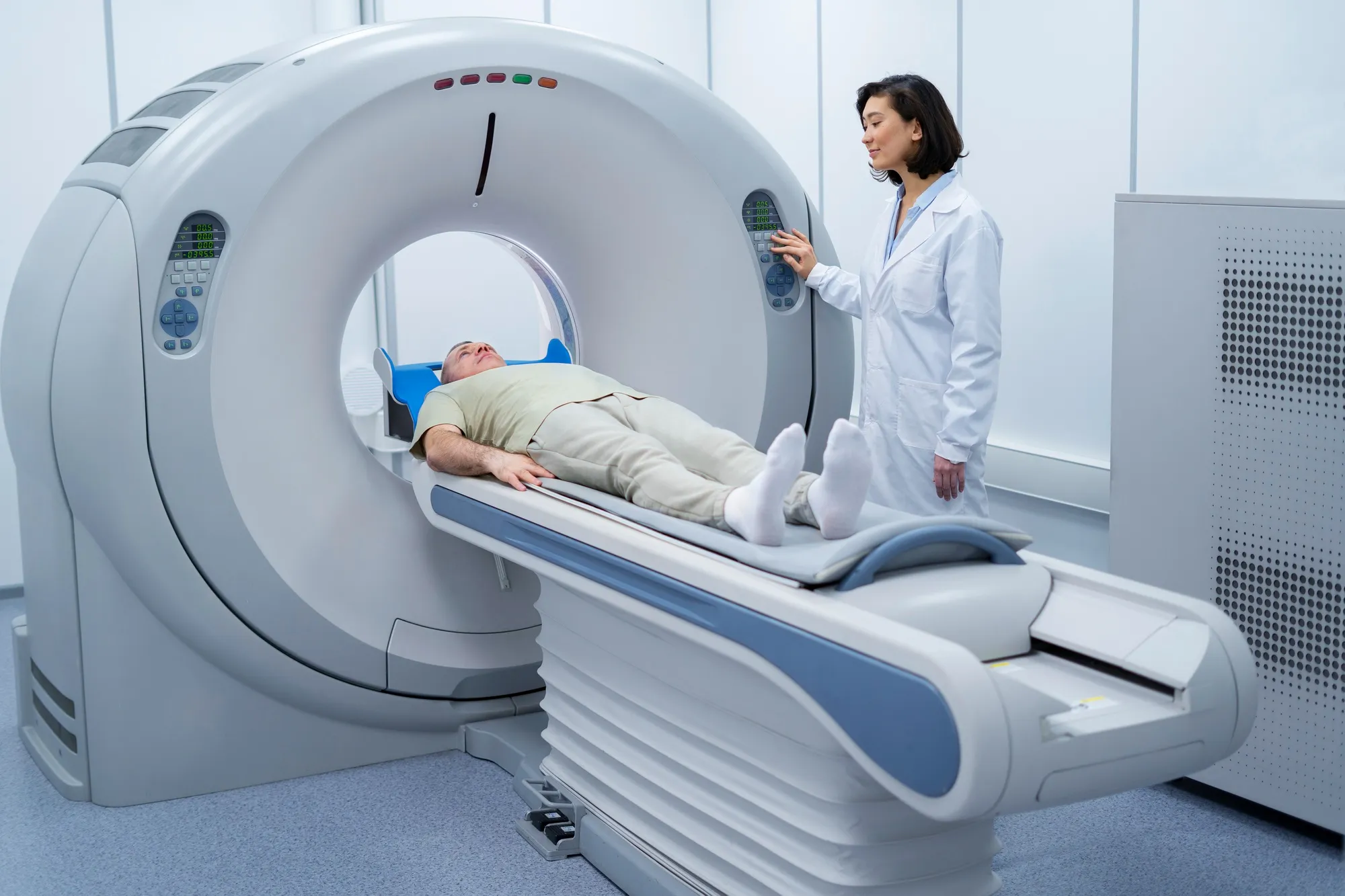Introduction
Magnetic Resonance Imaging (MRI) has revolutionized the field of diagnostic medical imaging with its ability to produce high-quality images without exposing patients to ionizing radiation. One area where MRI has proved particularly invaluable is in the imaging of liver pathologies, where it offers excellent contrast resolution and allows for a detailed examination of hepatic tissues. A recent study published in the “Magnetic Resonance in Medical Sciences” leverages stack-of-stars acquisition and navigator echoes in hepatobiliary phase (HBP) imaging, offering a solution for patients incapable of holding their breath during the scan.
The Challenge of Breath-Holding in Hepatic Imaging
The hepatobiliary phase is considered critical in liver MRI, as it provides essential information on liver function and lesion characterization. Conventionally, HBP imaging relies on patients holding their breath to minimize motion artifacts. However, not all patients can comply with breath-holding for the required duration, leading to suboptimal image quality. As such, there’s been a growing need for techniques that allow for quality imaging without the necessity for breath-hold.
Innovation in Liver MRI: Stack-of-Stars Acquisition and Navigator Echoes
A study led by Shintaro Ichikawa, Utaroh Motosugi, Marie-Luise Kromrey, and their peers at the University of Yamanashi addressed this challenge through a single-center, retrospective, cross-sectional study of 72 patients. They compared the efficacy of a prototype pulse sequence called stack-of-stars liver acquisition with volume acceleration (LAVA) (LAVA Star), both with and without navigator echoes. The findings, documented under the DOI 10.2463/mrms.mp.2019-0030, concluded that the combination of stack-of-stars acquisition with navigator echoes resulted in superior HBP imaging in a non-breath-hold setting.
The Study and Its Conclusions
The study results reveal a marked improvement in image quality when using the stack-of-stars acquisition with navigator echoes. This acquisition technique combined with respiratory navigation aids proves advantageous over traditional Cartesian acquisition methods by accommodating variations in patients’ breathing patterns. This means that even patients who struggle with breath-holding or have limited breath-hold capacity can still attain high-quality liver images.
Implications for Clinical Practice
The incorporation of this non-breath-hold technique into clinical practice could translate into several benefits for patient care. Not only does it enhance the patient experience by removing the stress and discomfort of breath-holding, but it also increases the likelihood of accurate diagnoses by providing clear and detailed images.
Technical Aspects of The Study
The stack-of-stars technique captures data in a radial pattern, which is more forgiving of motion than Cartesian methods. Navigator echoes track the diaphragm’s position, allowing the MRI sequence to sync with the patient’s breathing. This mitigates the effects of respiratory motion, making the images clearer and sharper.
References and Prior Research
This innovation builds on a foundation of prior research in MR imaging and breath-hold techniques, as evidenced by several key references:
1. Hamm B, Staks T, Mühler A, et al. (1995). Phase I clinical evaluation of Gd-EOB-DTPA as a hepatobiliary MR contrast agent: safety, pharmacokinetics, and MR imaging. Radiology, 195:785–792. DOI: 10.1148/radiology.195.3.7754011
2. Joo I, Lee JM, Lee DH, et al. (2019). Retrospective validation of a new diagnostic criterion for hepatocellular carcinoma on gadoxetic acid-enhanced MRI. Eur Radiol, 29: 1724–1732. DOI: 10.1007/s00330-018-5696-9
3. Yoon JH, Lee JM, Lee YJ, et al. (2019). Added value of sequentially performed gadoxetic acid-enhanced liver MRI for the diagnosis of small or atypical hepatic observations at contrast-enhanced CT. J Magn Reson Imaging, 49:574–587. DOI: 10.1002/jmri.26208
4. Ogasawara G, Inoue Y, Matsunaga K, et al. (2016). Evaluation of a respiratory navigator-gating technique in Gd-EOB-DTPA-enhanced magnetic resonance imaging for the assessment of liver tumors. Eur J Radiol, 85:1232–1237. DOI: 10.1016/j.ejrad.2016.04.014
5. Budjan J, Riffel P, Ong MM, et al. (2017). Rapid Cartesian versus radial acquisition: comparison of two sequences for hepatobiliary phase MRI at 3 tesla in patients with impaired breath-hold capabilities. BMC Med Imaging, 17:32. DOI: 10.1186/s12880-017-0203-1
Keywords
1. Non-breath-hold MRI liver imaging
2. Stack-of-stars acquisition MRI
3. Hepatobiliary phase imaging without breath-holding
4. MRI navigator echoes technique
5. Liver MRI innovation
Conclusion
This study highlights the potential of stack-of-stars acquisition with navigator echoes to significantly improve MRI liver imaging for patients unable to hold their breath. Such technological advances are critical for enhancing the diagnostic accuracy of liver pathologies and offering better patient care. With the continuous evolution of MRI techniques, medical professionals can expect even more innovative solutions that address the current limitations and expand the possibilities of diagnostic imaging.
